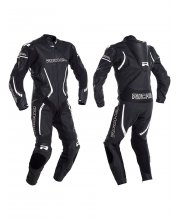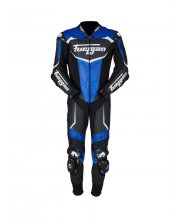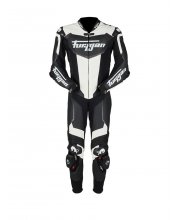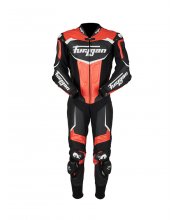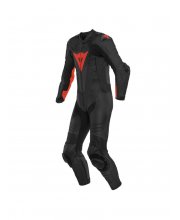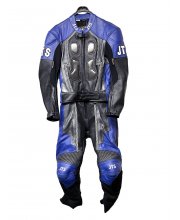1 & 2 Piece Leathers
1-Piece Leathers / Race Suits
1-piece leathers are the ultimate in protective motorcycle clothing. The famous 1950’s TT racer Geoff Duke was one of the first motorcyclists to adopt a full leather suit. The idea soon caught on and development has certainly come a long way since then! When buying, important things to consider include materials, construction and body armour.
Generally speaking, the fewer separate pieces that are used in the construction of a suit, the more resistant to splitting in the event of a crash it will probably be. That aside, good quality stitching is also very important. It’s rarely possible to see from the outside what kind of stitching techniques have been used so it’s best to get this information from the manufacturer’s specifications, where available or look for reviews and recommendations.
Stretch fabric panels are used on many suits in low risk areas. These can allow a suit to fit closely yet remain comfortable and allow good movement. It’s worth also remembering that stretch fabric allows extra air flow, so this leads to a cooler feeling suit when riding in warm weather. Areas of perforated leather aid cooling too.
You may have noticed that some 1 piece leathers have humps fitted on the back – these were developed on the race track to help aerodynamic efficiency.
When choosing the correct fit, we advise bearing in mind that many manufacturers size their suits very conservatively. Our size guides should help explain the sizing methods in use but we’ll be happy to help if you’d like to call us for advice.



